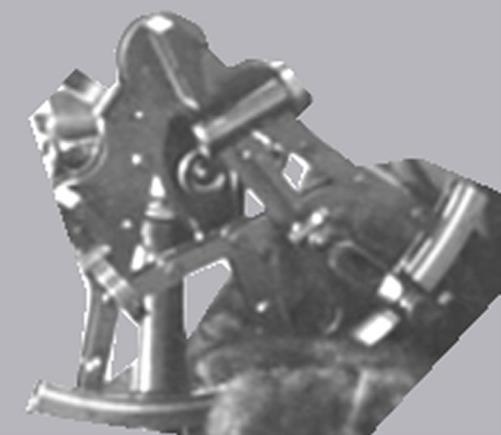
NavList:
A Community Devoted to the Preservation and Practice of Celestial Navigation and Other Methods of Traditional Wayfinding
From: Frank Reed
Date: 2022 Dec 31, 09:38 -0800
I tried to edit just the sextant in that old photo. In the attached image, I've cut it out of the original photo and then ramped up brightness and contrast to see detail. It looks like a good match for the instrument that you're investigating. It's a "double-frame" instrument, too.
You wrote that your friend...
"says it is a Troughton and Simms twin pillar sextant, and has a serial number of 2365 engraved into it"
I agree that it appears to be a Troughton sextant (I don't know when Simms joined the company... so it may be worth searching on "Troughton" alone). It was probably an antique sextant even on the Scott expedition. Sextants like this with a double-frame separated by little pins or "pillars" --hence "pillar sextants" historically but more often labeled "double-frame" today-- were popular around 1790-1810. The instrument may have had some historical significance (public, as in Royal Navy legacy or an early exploration voyage, or maybe just family history) for someone on the expedition back then. He might have brought it along to add to its legacy.
The serial number may lead somewhere, but it could turn out, for a sextant so old, that the only complete record of serial numbers is in some dusty paper files, as yet undigitized, in Britain.
Regarding the Antarctic photo you included in your original post, there was another NavList discussion of it a little less than three years (almost exactly coincident with the beginning of the pandemic lockdown here in the US). Here's that earlier discussion thread.
Frank Reed







